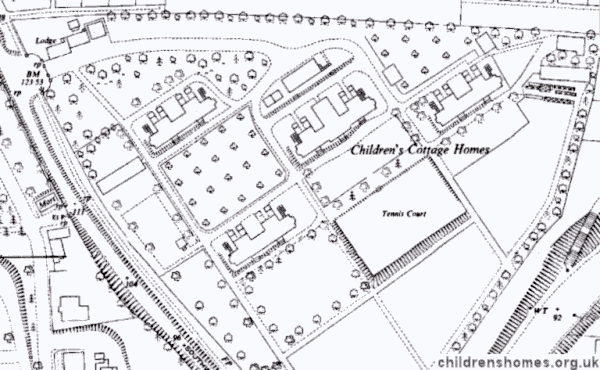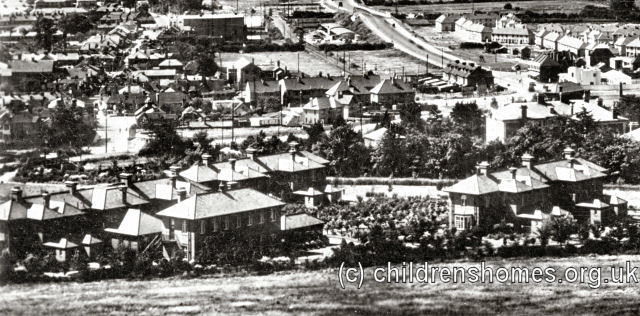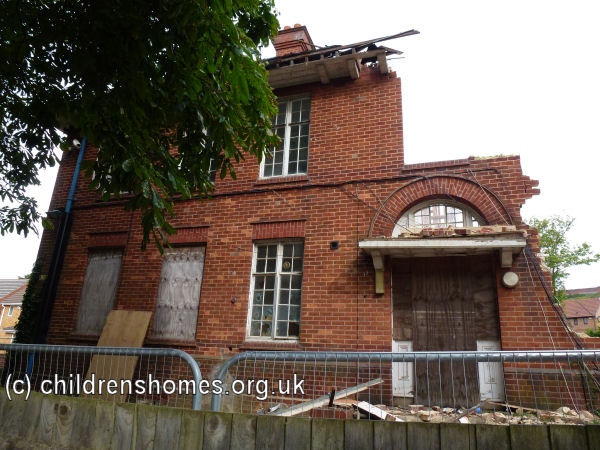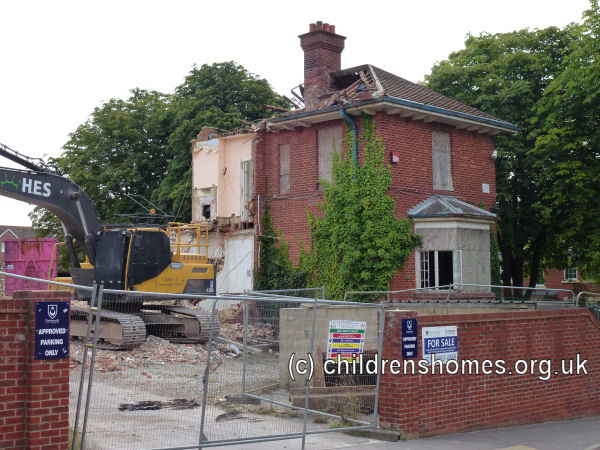Children's Cottage Homes, Cosham, Hampshire
In 1924, the Parish of Portsmouth (formerly the Portsea Island Union), which administered poor relief in Portsea and Portsmouth, decided to replace its 'barrack-style' children's homes at the workhouse site, with a cottage homes development. For this purpose it acquired an 8½-acre site on Portsdown Hill, Cosham, 120 feet above sea level, and running down to Southwick Hill Road. The first building scheme to be proposed was dropped on account of its expense. In the interval which followed, new legislation and other factors enabled widows to keep their children at home, and consequently the numbers in the existing home fell by about 50 per cent. In around 1929, a modified cottage homes scheme was adopted, and building work commenced, with a foundation stone being laid in March, 1930, by the then Lord Mayor, Councillor J.E. Smith. J.P. The following month, however, in line with national changes, responsibility for poor relief was in the area was taken over by the Portsmouth City Council's Public Assistance Committee and the project was completed under their jurisdiction.
The new homes were formally opened on October 28th, 1931, by Mrs. Perkins, wife of Alderman J.W. Perkins, J.P., Chairman of the Public Assistance Committee. The scheme comprised three blocks of general homes, each subdivided into two complete homes each accommodating 17 children. The slightly larger administrative block had a wing on either side, one for 30 senior boys and the other for 30 senior girls. A block of three workshops was arranged behind the administration block, with an assembly room above. In all, accommodation was provided for about 140 children and staff. Each child was provided with a separate bed and private locker and wore his or her own individual clothes. Each cottage was under the supervision of a foster mother. The girls were taught cooking and other household duties, and the boys were apprenticed to trades and placed into situations and supervised until they were old enough to live independently.
The School site is shown on the 1950 map below.

Children's Homes site, Cosham, c.1950.

Children's Homes administrative building, Cosham, 1931.

Children's Cottage Homes from the north, Cosham, c.1930s. © Peter Higginbotham

Former Children's Homes, Cosham, 2015. © Peter Higginbotham

Former Children's Homes, Cosham, 2015. © Peter Higginbotham
The homes were closed in 1968 and most of the buildings were then demolished. The former administrative blocked was converted to residential use and survived until 2015.
In 2008, Les Cummings, a former inmate of the homes in the 1950s at the Cosham cottage homes, published an account of his experiences there. He and other inmates were frequently subjected by the staff to brutal violence and there were also several incidents of sexual abuse. On one occasion, two boys were wrongly accused of having caused the death of two birds by raiding their nests for eggs. As a punishment, the Deputy Superintendent forced the birds' bodies into the boys mouths. Even worse, however, was the time Les spent with council-appointed foster parents where he was regularly beaten, starved and sexually abused. Despite his making complaints to his placement officer, no action resulted. In 2006, now aged 62, he demanded an apology from the council. This was refused, but following a radio programme about the homes in 2008, the council — though still not admitting liability — paid 19 claimants a total of £92,000. Finally, in 2014, he received a public apology from the council. After examining allegations against the homes, the Crown Prosecution Service decided not to prosecute as 17 of the alleged abusers had died and there was insufficient evidence against the remaining three.
Records
Note: many repositories impose a closure period of up to 100 years for records identifying individuals. Before travelling a long distance, always check that the records you want to consult will be available.
- None identfied at present — any information welcome.
Bibliography
- Cummings, Les Forgotten: The Heartrending Story of Life in a Children's Home (2008, Pan Books)
Links
- None identified at present.
Except where indicated, this page () © Peter Higginbotham. Contents may not be reproduced without permission.


